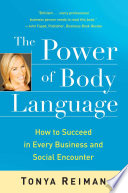

Non-verbal communication encompasses a vast array of signals that convey messages beyond spoken words. It includes facial expressions, gestures, posture, and even the tone of voice. Understanding these signals is crucial, as they often provide more insight into a person's feelings and intentions than verbal communication. For example, crossed arms may indicate defensiveness, while open palms can suggest honesty and openness. The book emphasizes the importance of being aware of these cues in both personal and professional interactions, as they can dramatically influence the outcome of conversations and relationships.
Continue readingThe way we carry ourselves and the signals we emit through our body language can significantly impact how others perceive us. The book discusses how confident body language can lead to increased trust and authority, while negative body language can undermine our credibility. This idea highlights the importance of aligning body language with verbal messages to create a coherent and persuasive communication style. By mastering body language, individuals can enhance their personal brand and influence how they are viewed in social and professional settings.
Continue readingBody language is not universal; it can vary significantly across different cultures. The book explores how gestures, expressions, and postures that are accepted in one culture may be offensive or misinterpreted in another. Understanding these cultural nuances is essential for effective communication in a globalized world. The author provides examples of specific gestures and their meanings in various cultures, illustrating the importance of being culturally sensitive and adaptable in our interactions with others.
Continue readingEffective leadership is often tied to the ability to communicate clearly and inspire confidence. The book discusses how leaders can utilize body language to project authority, build rapport, and motivate their teams. For instance, maintaining eye contact and using open body language can create a sense of trust and engagement among team members. Additionally, the book emphasizes the importance of reading the body language of others to gauge their reactions and adjust communication strategies accordingly, thereby enhancing overall team dynamics and productivity.
Continue readingThe book delves into the ethical implications of using body language to influence others. It discusses techniques that can be employed to create a favorable impression or persuade others to align with one's views. However, it also cautions against manipulation that lacks sincerity, as this can lead to distrust and damaged relationships in the long run. The author encourages readers to use their understanding of body language responsibly, emphasizing authenticity and integrity in all interactions.
Continue readingConflict is an inevitable part of human interaction, and body language plays a crucial role in how conflicts are navigated. The book outlines strategies for using body language to de-escalate tense situations, such as adopting a non-threatening posture and using calming gestures. By being aware of one's own body language and that of others, individuals can create a more conducive environment for dialogue and resolution. This skill is particularly valuable in professional settings where collaboration and teamwork are essential.
Continue readingTo help readers apply the concepts discussed in the book, practical exercises are provided that encourage self-reflection and practice. These exercises range from observing body language in everyday interactions to practicing specific gestures and postures in front of a mirror. By actively engaging with the material, readers can develop a greater awareness of their own body language and learn to interpret the signals of others more accurately. This hands-on approach reinforces the idea that mastery of body language is a skill that can be cultivated over time.
Continue reading